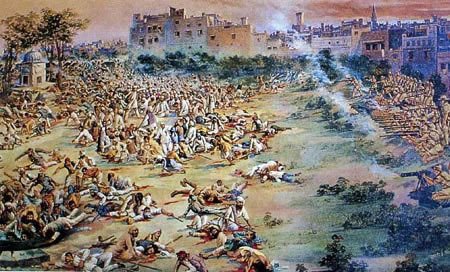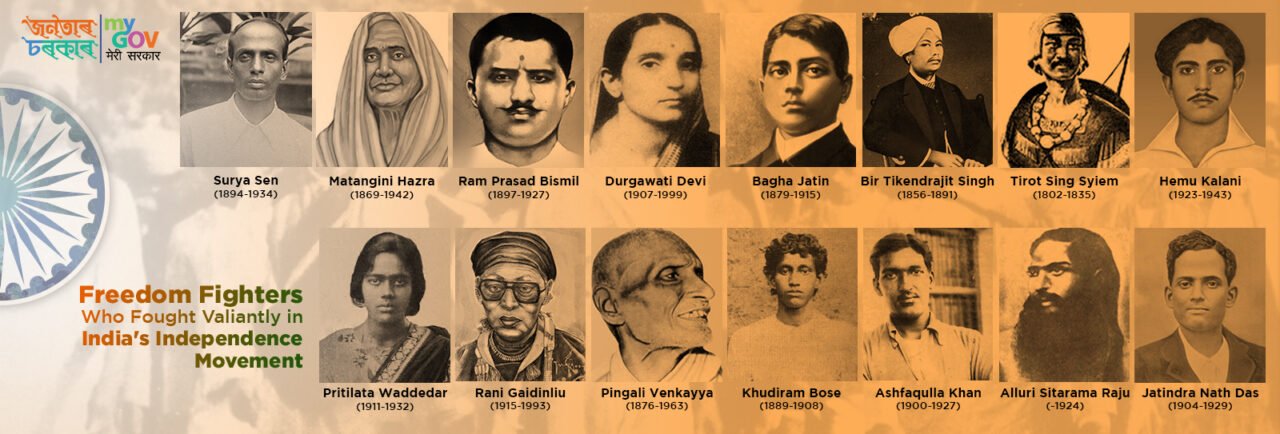By: Satyavan ‘Saurabh’
The Jallianwala Bagh Massacre, also known as the Amritsar Massacre, was an incident in which British soldiers fired at a large crowd of unarmed Indians in an open space known as Jallianwala Bagh in Amritsar, Punjab. The Jallianwala Bagh massacre, April 13, 1919, was a turning point in the Indian freedom struggle. That day was Baisakhi, a harvest festival popular in Punjab and parts of North India. Residents in Amritsar decided to hold a meeting that day to discuss and protest against Satya Pal and Saifuddin Kitchlew, two leaders who fought for independence, and the implementation of the Rowlatt Act, which allowed the British government to act without any individual. Equipped with the powers to take into custody.
There was a large group of men, women, and children in the crowd. They all gathered in a park called Jallianwala Bagh, which had a boundary wall around it. The protest was peaceful, and the gathering consisted of pilgrims visiting the Golden Temple who were only passing through the park, and did not come to protest. While the meeting was underway, Brigadier-General Reginald Edward Harry Dyer, who had arrived at the scene to teach the public a lesson, ordered the 90 soldiers he had brought with him to open fire on the crowd. To avoid death, many people tried to climb the walls and many jumped into the well located inside the park.
The tragedy was a blow to the Indians and destroyed their faith in the British judicial system. National leaders condemned the act and explicitly condemned Dyer. Nobel laureate Rabindranath Tagore in his protest letter condemning the brutal act of the British renounced the knighthood given to him. In protest against the genocide and the failure of the British to deliver proper justice to the victims, Gandhi renounced the title ‘Kaiser-i-Hind’ given to him by the British for his services during the Boer War in South Africa. The Congress session was held in Amritsar in December 1919. A large number of people including farmers participated in this.
General Dyer was highly appreciated by the British in Britain and India, although some in the British government were quick to criticize it. The massacre was a planned act and Dyer proudly declared that he had done it to create a ‘moral effect’ on the people and made up his mind that he would kill everyone if they were to continue the meeting. The government set up the Hunter Commission to investigate the massacre. Although the commission condemned Dyer’s act, it did not take any disciplinary action against him. He was relieved of his duties in the army in 1920. A British newspaper described it as one of the bloodiest massacres in modern history.
Large crowds of 15,000-20,000 people along with the majority of Sikhs came together in this garden to celebrate Baisakhi, the Punjabi harvest festival. They also gathered to rebel against the oppressive Rowlatt Act, which provided for tighter controls on the press, arrest without warrant, and indefinite detention without trial. The people were unarmed and the British surrounded them and opened fire ruthlessly. Even after that the British were not sympathetic but reacted with brutal repression in the following ways. In an attempt to humiliate and terrorize the people, the Satyagrahis were forced to rub their noses on the ground.
They were forced to crawl on the streets and salute all the Sahibs. People were flogged and villages (around Gujranwala in Punjab) were bombed. This added fuel to the fire for the Indians and the national movement was carried forward with more intensity. The leaders heavily criticized the government and Tagore renounced his knighthood in a protest. The whole country came together to oppose the British so this incident brought unity to India which was essential for the freedom movement.
By the end of the 19th century, in India as well as around the world, British rule had acquired certain legitimacy in the eyes of the enslaved masses. By that time, most Indians had reconciled with the progressive nature of the colonial rule. Jallianwala Bagh broke people’s faith in justice and fairness toward the British. For most Indians, the massacre of the unarmed was a betrayal of the trust they had placed on the British to rule wisely, justly, and fairly. In the eyes of the Indians, the just, fair, and generous Englishman suddenly turned into a ruthless, bloodthirsty tyrant who could not be trusted. Jallianwala Bagh exposed the evil living in the ‘Enlightened’ kingdom.
From then on, it was slow but sure dawn for the British rule in India. On this feeling of betrayal, Gandhi started his mass movement, which punished him for breaking the laws made by the rulers. As soon as people started deliberately breaking the laws made by the state, the state itself became illegitimate. Now people were actively demanding Purna Swaraj. The Jallianwala Bagh massacre was a turning point in India’s freedom struggle. A memorial was established by the Government of India in 1951 at Jallianwala Bagh in memory of the spirit of Indian revolutionaries and those who lost their lives in the brutal massacre.
It stands as a symbol of struggle and sacrifice and continues to inculcate the spirit of patriotism among the youth. In March 2019, the Yaad-e-Jillian Museum was inaugurated, displaying an authentic account of the massacre. (The author is a Research scholar, poet, freelance journalist, and columnist)







